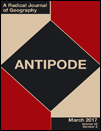Visual Culture according to the Police
It sounds more and more likely that the Police have something to do with the death of a newsagent at the rally in the City of London. Many witnesses have come forward and most importantly there is The Picture: the evidence, the forensic clue, the probatio, the real stuff judges love and on which the surveillance culture of the streets in this country has been built upon. Mr Tomlinson is on the floor, surrounded by police officers, his hands near his head as he had been struck on the head. He looks dazed in the photograph as if suffering from concussion. Besides, at the same time that the man collapsed, police had begun an unprovoked assault upon a crowd that wanted to go home after being penned without facilities for over 7 hours, and it seems more than likely to me that Mr Tomlinson may have received some kind of push or blow. The police instead claim that the man was a passer-by who suffered a sudden heart attack, and that they tried to intervene in order to save him, despite the launch of ‘missiles’ from the protesters.

I understand that photos and videos can deceive, and that they rarely hold the truth. On the other hand, inevitably, they carry some sort of attachment to the real: the man was there, the police were armed in anti-riot gear, and they were pushing demonstrators back at that time. Suspicion, at very least, is a legitimate stance.
But this post is not about what happened at Bishopsgate on Wednesday evening. Nor it is a discussion about the meanings of documentary photography. Instead, it hopes to show how awful is the pretension in place in the UK since 16th February 2009: to take a photo of a policeman or police woman without their permission is a new offence, section 58A of the Terrorism Act 2000, inserted by section 76 of the Counter-Terrorism Act 2008.
The one above is a beautiful example of just why the Police and Politicians want it to be a criminal offence to photograph and video police on the street.
In addition, throughout the day of the anticapitalist demonstrations, police photographers pointed camcorders and cameras with powerful zoom lenses at us: the CCTV-man was protected and instructed by two officers around him all the time. This was a clear attempt to intimidate people and the implied threat being that you were being watched (remember the Panopticon?), and that your attendance was itself a criminal act worthy of surveillance.
![]()
Visual Research Ethics at the Crossroad (paper)
![]() Video-surveillance and changing nature of urban space
Video-surveillance and changing nature of urban space



1467-7660/asset/DECH_right.gif?v=1&s=a8dee74c7ae152de95ab4f33ecaa1a00526b2bd2)

Well done to Sociology Lens to have published the news one day ahead of the other newspapers. Last night, the news channels showed a video clip in which a police officer is seen pushing mr. Tomlison violently to the ground and one of the protesters helping him to get up…..
This seems a little different than the panopticon, where you do not know if you are being observed but always *might be* being observed. It sounds as though the police wanted protesters to know they were in fact being observed. Although deterrence is still the desired outcome the methods are quite different.
Keri
Yes and no, in the sense that the police were using a very powerful zoom to frame you (a la paparazzi), and I had to chase them around to get those shots. As an activist commented: ‘Don’t stop photographing them. As you did. And, as the legal observers did in the climate camp, use a visibility jacket, film them, take their numbers, show them we’re watching’. On the other hand, when we are in the urban public space we all know of the presence of CCTV, but we don’t know whether they are actually pointing at us, or if anyone is going to bother to look at the clips. What they eventually want to achieve is a change in the emotional experience of the place.
Regards,
Paolo